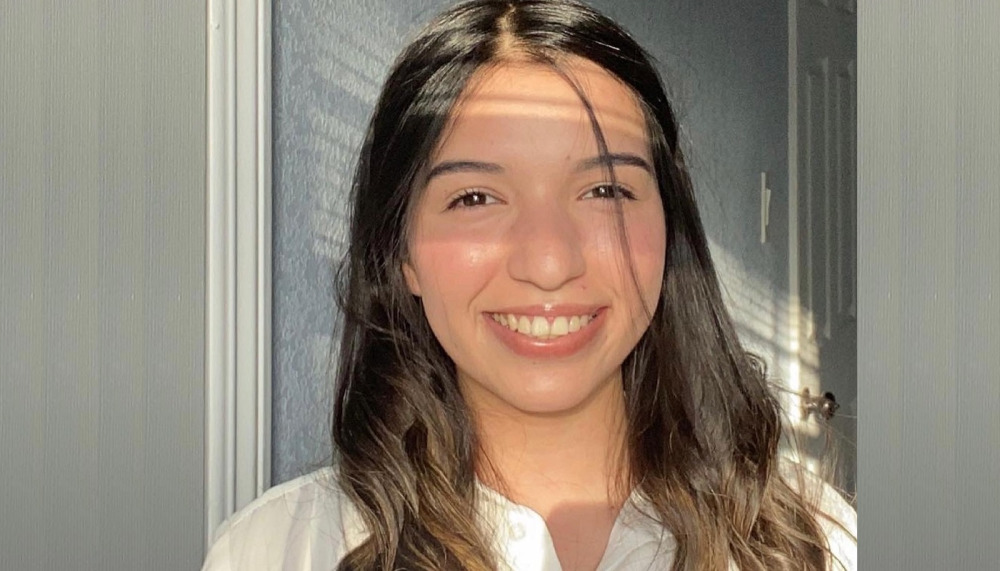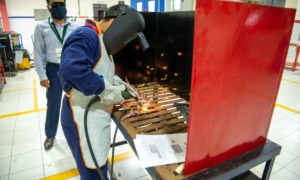As a science lover who had watched family members struggle with diabetes and heart disease, Kristal Acosta, now 18, dreamed of becoming a doctor. But no one in her family had gone to college, and educational opportunities in her low-income Hayward, California neighborhood were limited.
Determined to bridge these gaps, she applied and was accepted in the summer of 2020 into a summer science enrichment program – but it would be virtual due to the Covid-19 pandemic.
“I was excited,” Acosta said. “But I also wasn’t sure I could make connections and network with people.”
 Every summer for over 30 years, Stanford Medical Youth Science Program (SMYSP) had brought underserved Northern and Central California high school students to Stanford University to encourage and equip them to pursue biomedical sciences. For five weeks, participants attended lectures by medical school faculty, dissected cadavers, conducted public health research, and shadowed doctors.
Every summer for over 30 years, Stanford Medical Youth Science Program (SMYSP) had brought underserved Northern and Central California high school students to Stanford University to encourage and equip them to pursue biomedical sciences. For five weeks, participants attended lectures by medical school faculty, dissected cadavers, conducted public health research, and shadowed doctors.
“We give them a glimpse into science… and assurance that you belong anywhere in the health care field if you like it, or anywhere in higher education,” said Marilyn Winkleby, a professor of medicine emerita who co-founded the program and has since served as the faculty advisor.
Last summer, some science enrichment programs were canceled due to the Covid-19 pandemic. Education advocates fear these types of cancellations could have long-lasting effects on STEM diversity. Stark racial and ethnic disparities in Covid-19 cases and deaths have increased the urgency of boosting underrepresented minorities in medicine, health experts say.
By 2020, over 700 students, largely low-income and underrepresented minorities, had graduated from SMYSP. As of 2015, 99% of the program’s alumni had attended college, and nearly half who had completed college were attending or had attended medical or graduate school.
When SMYSP and other residential pre-college programs at Stanford were cancelled due to the pandemic last summer, volunteers, including Winkleby and some Stanford staffers, stepped in to pivot SMYSP online, said Alivia Shorter, SMYSP’s executive director. Access to Achievement Education Foundation, a nonprofit Winkleby had founded, sponsored the program.
Through Zoom, 33 participants watched lectures by medical school professors and cadaver dissections, attended college admissions workshops, discussed science career pathways with assigned mentors, and collaborated with their peers on a public health research project with guidance from SMYSP alumni.
The program is free to students — it would be out of reach for most of them otherwise, Winkleby said.
Despite an overall increase in the number of kids participating in structured summer programs over the past few decades, that rise is driven by middle and upper-income families. Only 14% of school-aged children from low-income families enrolled in summer programs in 2019, with cost cited as a major barrier, according to a survey by the Afterschool Alliance.
While pivoting online saved the program from cancellation, some elements couldn’t be replicated. In addition to hands-on science, participants in a typical year dined with medical school professors and students, and lived in a residential house with their peers.
For Dr. Estell Williams, a 2002 SMYSP alumna who is Black and from East Oakland, a low-income community, face time was crucial for building rapport.
“This was my first time being away from family, and we were around each other 24/7,” she said. “These other students became family.”
That camaraderie, she said, has extended well past that summer; members of the SMYSP community have helped her throughout her journey to becoming a surgeon and assistant professor of surgery at the University of Washington.
Being able to talk to staffers about her challenges, student Kristal Acosta said, was “helpful and motivating.”
Maintaining community was a priority as the program went virtual, and required intentional planning, said Yael Isler, diversity and outreach programs coordinator at Stanford Online High School, who led SMYSP’s virtual pivot last summer.
“We always had to think about what their day would have looked like, then how we can mimic it as best as we can,” she said.
As ice breakers, students were split into smaller groups where they played trivia and online learning games together, and once were invited to share their pets on Zoom, Isler said.
Acosta’s initial concerns that she wouldn’t be able to build her network quickly faded. She forged bonds with her peers through her group research project and playing games, and her mentor introduced her to surgeons who sparked her interest in becoming a cardiothoracic surgeon.
But, like some of her peers, she faced barriers she would not have encountered in an on-campus program.
Acosta juggled a part-time job in the evenings and caring for two younger siblings during the days with SMYSP. At school, she said, she could be marked as absent if she turned off her video. But at SMYSP, she could turn off her video when, for example, she had to get ready for work. Being able to talk to staffers about her challenges, she said, was “helpful and motivating.”
Isler said SMYSP tried to offer additional support for students who needed it, subsidizing internet for a student who lacked home wi-fi, allowing students to turn off their video or mute their audio, and making staff available during office hours to help students catch up.
Although the pandemic created additional hardships for students, going virtual enabled SMYSP to expand its reach from 24 to 33 students. This summer, Isler said, the program remains virtual with 29 students, and Stanford resumed sponsoring it.
Whether online summer enrichment programs produce comparable outcomes to those in person remains to be seen.
Catherine Augustine, a senior policy researcher at the RAND Corp who studies summer learning programs, said that she is not aware of rigorous studies that have evaluated virtual summer enrichment programs, but she believes cancellations could be harmful given that enrichment programs can boost academic and personal growth.
All SMYSP participants last summer graduated from high school and were admitted to college, said Isler.
Acosta will matriculate at University of California, Berkeley in the fall. She said SMYSP helped her navigate the application process, and opened the door to a lasting community.
“Our little group is a family,” she said.






























